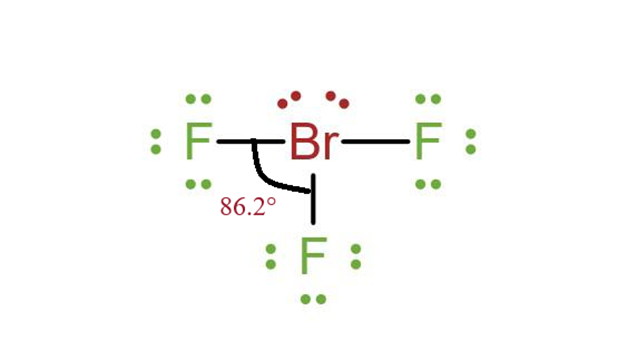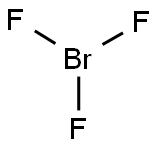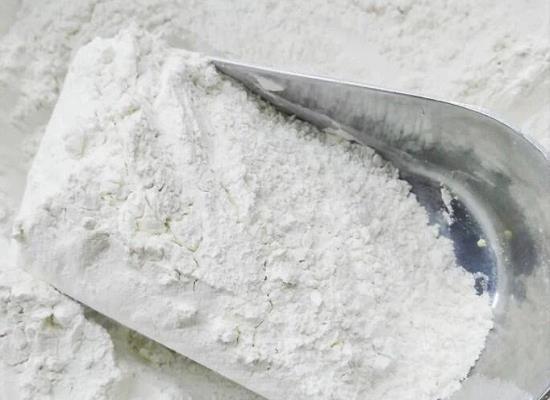BrF3 Lewis Structure: Drawing, hybridization, polarity
BrF3 Lewis Structure
The BrF3 Lewis structure consists of one central atom, Bromine (Br), and three outer atoms, fluorine (F), at a bond Angle of approximately 86.2°. The bromine atom (Br) and each fluorine atom (F) are individually connected by a single bond. The bromine atom (Br) has two lone pairs of electrons, and each fluorine atom (F) has three lone pairs. The BrF3 Lewis structure is shown below:

Steps for drawing the BrF3 Lewis structure
Step 1 Calculate the number of valence electrons for Br and F
Bromine and fluorine are both group 17 elements on the periodic table. Therefore, there are 7 valence electrons in both bromine and fluorine atoms, so the total number of valence electrons in the BrF3 molecule = 1 valence electron from a bromine atom + 3 valence electrons from a fluorine atom = 7 + 7(3) = 28.
Step 2 Identify the central atom
The central atom must have a high valence or minimal electronegativity. For the BrF3 molecule, fluorine (F) is the most electronegative atom in the periodic table, and bromine (Br) is less electronegative than fluorine, so bromine is the central atom and fluorine is the outer atom.
Step 3 Labelling the electron lone pairs between atoms
Total number of valence electron pairs = σ-bonds + π-bonds + lone electron pairs on the valence shell, which is obtained by dividing the total number of valence electrons by two. For the BrF3 molecule, the total number of electron pairs is 14.
The bromine atom is connected to each of the three fluorine atoms by a σ-bond (one σ-bond is equal to one pair of electrons), and the remaining eleven pairs of electrons are distributed as follows: two pairs of electrons on the bromine atom and three pairs of electrons on each of the fluorine atoms (3).
Step 4 Stability of structure
In order to make the Lewis structure of the BrF3 molecule more stable, we have to check if an octet is formed in the BrF3 molecule. In step 3, we are able to see that the bromine atom (Br) in the molecule has only six electrons around its molecular structure. This central bromine atom is super octet stable. The external atom fluorine (F) has three lone pairs of electrons on it and the fluorine atom is connected to the central bromine atom by a σ-bond, which is also a lone pair of electrons, so the fluorine atom (F) is also stable with eight electrons around it, forming an octet. Therefore, the Lewis structure of BrF3 has reached a steady state at step 3.
Hybridisation of BrF3
Hybridisation is the process by which atomic orbitals mix to form new hybrid orbitals which then participate in bonding. In the case of BrF3, the hybridisation of the central bromine atom is sp3d, leading to the formation of five sp3d hybrid orbitals. sp3d hybridisation involves the mixing of one s-orbital, three p-orbitals and one d-orbital to form five sp3d hybrid orbitals. These hybridised orbitals are then arranged in a triangular bipyramidal geometry around the bromine atom, accommodating bonding and lone pairs of electrons.
Polarity of BrF3
The fluorine atom (F) is a highly electronegative element.There is an electronegativity difference of 2.96 units between the bonded fluorine (E.N = 1.02) and bromine (E.N = 3.98) atoms in each of the Br-F bonds in BrF3.Therefore, each Br-F bond is polar. Therefore, each Br-F bond is polar. the asymmetric T-shaped3 molecule of BrF maintains this polar effect. the dipole moments of the Br-F bonds are not cancelled. Instead, their effects add up. Thus, the BrF3 molecule is polar and has a net dipole moment μ>1.19 D. The BrF3 molecule is not polar.


